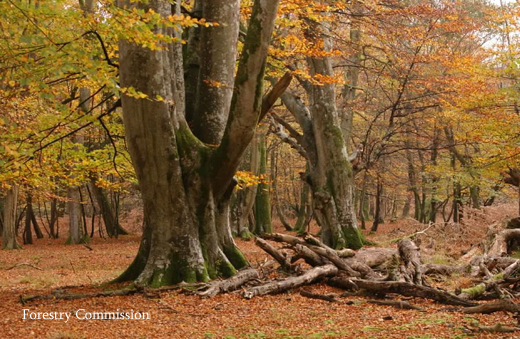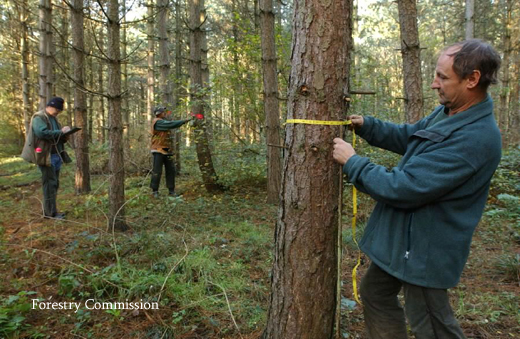UK: Britain’s forests reveal their secrets
08.09.09
Britain’s woodlands have gone through a tumultuous past and now look set to become a vital part of the future. A new survey by the Forestry Commission of the estimated 2.75 million hectares (or 12 per cent of the land area) of woodland in Britain will form the most comprehensive record of them ever.
The ancient wildwood that cloaked Britain in trees until medieval times is a distant memory and in its place a complicated mosaic of native, non-native, ancient, semi-ancient - and a whole host of other descriptives - exist.

Human association with forests is both emotive and practical. Neolithic man began the clearance of trees so he could hunt more effectively and begin to settle and farm and it was this that paved the way for a close interaction and use of forested landscapes. From great building projects - a thousand oaks are said to have been chopped down to build Salisbury Cathedral – to equipping a fleet of boats that could conquer the world, trees have been at the heart of British exploits.
But it was the resource-sapping First World War that most dramatically altered the landscape. With timber in such short supply and the possibility of another war looming ancient broad-leaved woodlands were hastily replaced with monoculture plantations - since the 1930s it is estimated that half of the broad-leaved woodlands has been replaced with conifers or agriculture.
Making woodlands work for us and the environment is the key to the Forestry Commission’s survey. Climate change is a very real threat, but its impacts are largely unknown and – more importantly - unknowable. So any woodland that blankets Britain must be resilient to these threats but also help with mitigation – floods and drought for example - too.
There is a danger that the climate agenda overtakes all the other reasons for why we love woodlands so much, so it’s comforting to hear Tim Rollinson, Director General of the Forest Commission talk in rounded terms about them: “The UK's woodlands will be hugely important in our efforts to tackle damaging climate change and cope with its impacts. What we're doing with this five-year survey is planning for an uncertain future brought on by a changing climate.
British woods and forests will not only play a key role in storing carbon and cutting emissions but will also help wildlife and people cope with the impacts, for example by providing corridors to allow species to move as the climate changes.”
The National Forest Inventory – as the survey is now called – has taken place every 10 to 15 years since the 1920s and will look at 15,000 sites up and down the country. The surveyors will be recording species, populations, ages, heights and condition as well as all the other forest inhabitants. All this information from the ground will be collated and merged with ultra-modern material gathered from satellite imagery and aerial photography to create an accurate up-to-date picture of the state of Britain’s woodlands.

Forestry Commission staff begin the five year survey
It’s also important we don’t see woodlands as a stagnated landscape. There is room for more and the UK government is eager to set this in motion by planting 10,000 hectares a year for the next 15 years.
Tim continues: “…we want to see more woods created. There is a lot of focus on the mitigation issues, which are very important, but adaptation is every bit as important as a country we need our woodlands and trees, and they need to be well managed. The survey will provide crucial information on the extent and health of woodlands across Britain including how much carbon they store, while in the future, surveyors will return to each of the sites to monitor changes.”
The survey is being carried out in all parts of Britain during September and October 2009 and will continue until 2014.